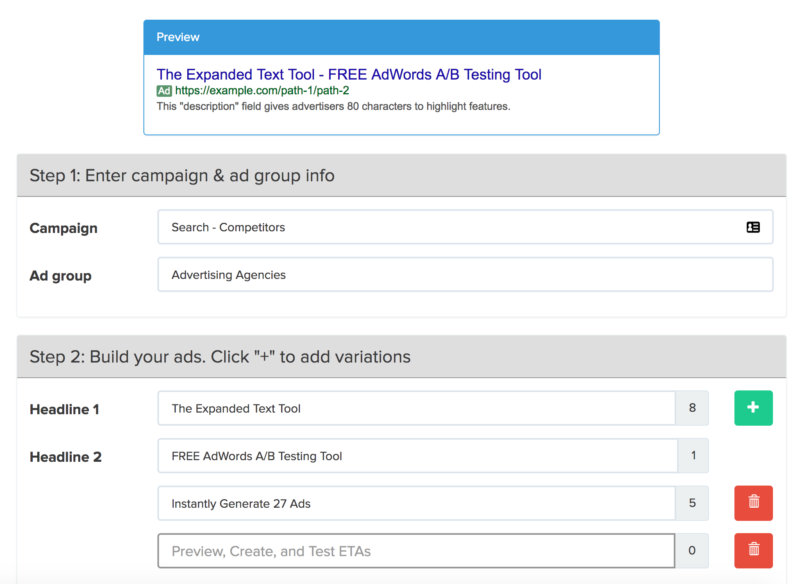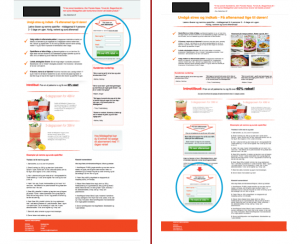Columnist Todd Saunders discusses the importance of data-fueled decision-making with regard to ad copy and suggests a few tools to help you test and optimize your search ads.

As advertisers, we can’t afford to ignore data in our decision-making.
Since you probably just sighed a little bit or rolled your eyes at that sentence, here are four facts that reveal why ignoring data is like ignoring the fact that you are currently on fire:
1. Online advertising is getting more competitive
Since AdWords and other PPC platforms are auction marketplaces, or “pay to play” channels, more players means more money needed to play.
Each year, the Internet Advertising Bureau (IAB) and PwC releases their “Internet Advertising Revenue Full-Year Report,” which compiles revenue data from companies that sell online advertising. Their most recent full-year report, from 2015, shows annual revenues for these companies growing steadily year over year since 2009, with a compound annual growth rate (CAGR) of 17 percent over the past 10 years.

Internet advertising revenue per year, 2005–2015. Source: “2015 Internet Advertising Revenue Full-Year Report” by PwC & Interactive Advertising Bureau
The steadily growing revenue suggests that more and more companies are entering the online advertising arena — and that they are investing more in it, too. Greater competition means higher costs for advertisers. Having to pay more to play makes the consequences of ignoring potential money-saving opportunities in the data greater.
2. The amount of usable data is increasing
For a long time, you could only measure how many people saw your ad, how often they clicked and how much it cost you.
Now, we have full-funnel data on the customer’s entire buying journey, from first interaction to purchase.
But it is so much more than knowing which ad the user saw and whether or not they bought after clicking. We now have answers to questions:
- What device were they using?
- Where in the world were they?
- What terms did they search to trigger your ads?
- What browser were they using?
- What is their age, gender and income level?
Just this year, Google opened up tablet bid adjustments, demographic data for Search campaigns and a whole new standard format for text ads. The number of variables to look at and to test is rising. Ignoring this opportunity could be the difference between a failing and flourishing AdWords account.
Read my last Search Engine Land post about how to maximize the amount of data your Search campaigns generate.
3. What you think is good versus bad ad copy doesn’t matter
As marketers, it’s our job to understand our target audience — what messages resonate with them and what problems they encounter that our product can solve.
Without measuring actual results against what we believe to be the best message or the most valuable solution to a problem, our marketing knowledge base is built on assumptions.
And we all know what happens when we assume.
It’s just as important to update our assumptions about our target audience and how we reach them. At the end of the day, can our market knowledge tell us that more people will buy if we put the price in our ad versus leaving it out?
Business expertise and marketing knowledge get us started. Using well-structured test and data fills the holes in our total business funnel (more on this next).
4. Different people behave differently
Let me put on my Captain Obvious hat on for a minute: different people will respond to your product or service offering differently.
This is a cornerstone of marketing theory: find the audience thta is most likely to benefit from your product or service, then make it dead-simple to find you and buy from you.
This idea should drive how you create campaigns, as well as how you optimize your campaigns. For example, answer me this: Are 100 mobile visitors to your website equal to 100 desktop visitors?
Don’t know?
What if you are spending 90 percent of your daily budget on mobile while desktop visitors have brought in half of total revenue? Sounds like you might be overspending on mobile users.
Exercises like this are crucial to squeezing every penny out of your monthly advertising budget. They’re also valuable learning opportunities for your marketing efforts in general. Don’t you think it would be important to learn that, for example, women are four times more likely to buy your product than men?
Questions like these inspired me to compile this quick list of three free tactics/tools that will help you create, run and analyze tests in AdWords. Enjoy!
Three tools to test and optimize your AdWords ads
Tool: #1 Brainstorm ad copy with the MECLABS conversion formula
Conversations about ad copy and image ad creative are often completely separate from the analysis and optimization side of PPC campaigns. That doesn’t need to be true. Writing text ad copy certainly requires some creative skill, but we can still take an analytical approach to help guide our efforts.
Each text ad should convey enough information to your audience before you pay for a click. What information is “enough?” Try out this formula from MECLABS Institute:
Now, I don’t expect you to use this formula to actually calculate a number value for each of your ads, but I do want you to consider the components and their relative importance.
Motivation, or user intent to buy, is the most valuable variable. How far down the buying funnel is your audience? At the end of the day, the best ads in the world aren’t very useful to people who are simply looking for more information or are not yet ready to buy.
Though you can control intent by what keywords you target, the remaining variables are a helpful guide to writing your ads:
- v = Is there a clear value proposition? Why should they buy from you?
- (i – f) = Are you providing enough incentive to get the user to act now, while reducing as much friction in the process as possible?
- a = Are you requiring a lot of personal information in order for the user to receive your offer?
Try running a few of your ads through this line of thought and see if there are any major deficiencies in your copywriting.
Tool #2: Create, set up & execute: Instantly generate A/B tests with the AdWords ETA Tool

Our engineers recently built this tool to combine three existing tools that AdHawk account managers use on a regular basis: AdWords’ ad preview tool, AdWords bulk uploader and an A/B test generator.
You can easily create ready-to-upload expanded text ads that test up to 27 variations of the same ad. Simply hit the green [+] button next to the variable you would like to test and enter your test copy.
Here are three tests you can start with:
- Optimize your call to action (CTA) & promotion. Take the headline from your best-performing text ad (legacy or existing) and enter it as Header #1. Then use the ETA Tool to generate multiple Header #2 variations to test different CTAs (Learn more, buy now, sign up) or Promotions (discount, campaign, bonus offering).
- Dynamic keyword insertion (DKI) vs. regular keyword targeting. An early test comparing ETAs to old text ads found that using Dynamic Keyword Insertion in one of the two Headline fields actually hurt CTR (click-through rate). It’s worth finding out for yourself if this holds true for your own ads.
- Find the feature that triggers the most sales. Try highlighting key product features for the more broad keywords you target. Look for keywords that suggest general buyer intent (they have the problem), and test your various features (i.e., the solution) in different settings.
For these tests, be sure to set your ads to Rotate Evenly so you can acquire data and make decisions more quickly.
Need some more ideas? Check out these 26 Ad Copy Test Ideas.
Tool #3: Analyze & Optimize: Test your results and pick your winner with this A/B Test Result Calculator
Now it’s time to pick the winner, the top performer, the crème de la crème, the money savior, the CHAMPION!
But… what does that mean exactly?
It depends on what KPI (key performance indicator) you are optimizing for.
This calculator tool from Cardinal Path is extra helpful if you’re optimizing for highest CTR or lowest CPA (cost per acquisition).
Enter the data from your A/B tested ads. It will tell you whether or not you have a winner. The best part? If you don’t have enough data to have a statistically significant “winner,” this calculator will tell you how confident it currently is and how many more clicks you’ll need in order to reach statistical significance.
Get testing!
Now, it’s time to test with confidence. Let us know how it goes!
[Article on Search Engine Land.]
Some opinions expressed in this article may be those of a guest author and not necessarily Marketing Land. Staff authors are listed here.
Marketing Land – Internet Marketing News, Strategies & Tips
(78)
Report Post












